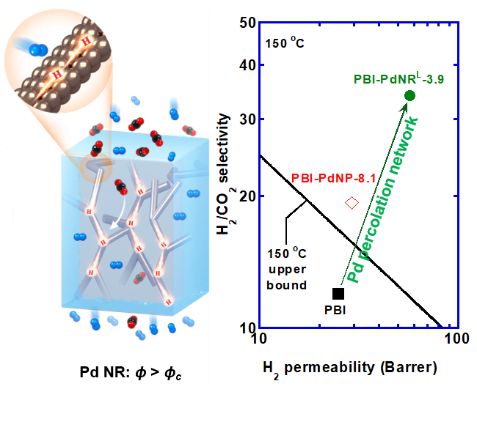(651g) Palladium-Percolated Networks in Polybenzimidazole Enabled By Low Loadings of Branched Nanorods to Facilitate H2 Transport
AIChE Annual Meeting
2023
2023 AIChE Annual Meeting
Materials Engineering and Sciences Division
Transport Phenomena in Polymers 2
Tuesday, November 7, 2023 - 9:30am to 9:45am
Polymeric membrane technologies are favored to chemical separations for their good processability and high energy efficiency, including H2/CO2 separation that is a key step for the blue hydrogen production from the gasification of fossil fuels. Nanoparticles (NPs) at high loadings are often used in mixed matrix membranes (MMMs) to improve gas separation properties, but they can lead to defects and poor processability that impede membrane fabrication. Herein we demonstrate that branched nanorods (NRs) with controlled aspect ratios can significantly reduce the required loading to achieve superior gas separation properties while maintaining excellent processability, as demonstrated by the dispersion of palladium (Pd) NRs in polybenzimidazole for H2/CO2 separation. Increasing the aspect ratio from 1 for NPs to 40 for NRs decreases the percolation threshold volume fraction by a factor of 30, from 0.35 to 0.011. With percolated networks formed by Pd NRs at a volume fraction of 0.039, the MMM showed simultaneous increases on H2 permeability by 70% to 43 Barrer and H2/CO2 selectivity by 100% to 24 at 150 oC. Particularly, the MMM exhibits stable H2 permeability of 110 Barrer and H2/CO2 selectivity of 31 when challenged with simulated syngas at 200 ℃, surpassing Robeson’s upper bound. This work highlights the advantage of NRs over NPs and nanowires and shows that right-sizing nanofillers in MMMs is critical to construct highly sieving pathways at minimal loadings. This work paves the way for this general feature to be applied across materials systems for a variety of chemical separations.


